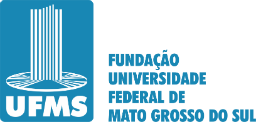Synthesis and characterization of new materials based on metal nanoparticles (including noble metals) applied to the transport of medicines, study of intra-aggregate mobility of bile salts and hydrogen production.
DESCRIPTION
Crises associated with energy, environmental and human health issues are among the main global challenges in the 21st century. Antibiotic multi-resistant bacteria have become one of the major global problems today. The inappropriate and indiscriminate use of antibiotics caused the bacteria to develop resistance to several classes of antibiotics, resulting in multidrug-resistant bacteria.
Recent studies have pointed out the potential of photodynamic action be used for inactivating multi-resistant bacteria, herein called photodynamic inactivation (PDI), which consists of activating a photosensitizer (PS) through light irradiation in the presence of molecular oxygen (O2), promoting the generation of reactive oxygen species (ROS) with the objective of inducing cell death. In addition, due to agricultural, industrial and domestic activities, the level of pollution in the atmosphere, soil, rivers and oceans has increased significantly in the last 30 years. Contamination of rivers and river basins is a serious problem that has been extensively debated by member countries of the United Nations (UN). In this scenario, it is important to stress that there are some compounds, known as persistent organic pollutants (POPs), which remain in the environment even after the effluent treatment commonly applied in the water plant processing. In another way, due to the global increase in energy demand, the generation and consumption of energy from renewable and sustainable sources, avoiding the use of fossil fuels that represent 80% of the world’s energy consumption, is another problem of great importance for humanity. In this scenario, the development of nanomaterials capable of absorbing light and inducing oxidative processes through the formation of highly reactive radicals or species, is a cutting-edge strategy that can bring scientific and technological solutions to problems related to health, environment, and energy. The research project with international cooperation entitled “Development of nanomaterials for induction of oxidative processes: applications in environmental, energy and health areas”, proposed by the PPG in Chemistry (concept 4), in partnership with the PPG in Health and Development of the Region Center-West (concept 5), contemplates this objective.
COORDINATOR
E-mail: amilcar.junior@ufms.br
MEMBERS
Gilberto Maia (Universidade Federal de Mato Grosso do Sul)
ORCID: 0000-0003-2449-0887
Gleison Antônio Casagrande (Universidade Federal de Mato Grosso do Sul)
ORCID: 0000-0002-1667-913X
Biprajit Sarkar – Institute of Chemistry and Biochemistry, Free University Berlin, Germany.
ORCID: 0000-0003-4887-7277
Marc Verelst – Paul Sabatier University (Toulouse III, France).
ORCID: 0000-0001-8005-5391
Cornelia Bohne – Department of Chemistry – University of Victoria – Canada.
ORCID: 0000-0001-9996-0076
Manash R. Das, Materials Sciences and Technology Division – CSIR-North East Institute of Science and Technology, Jorhat – India.
ORCID: 0000-0002-6317-7933
Vladimir P. Fedin, Nikolaev Institute of Inorganic Chemistry, Novosibirsk, Russia.
ORCID: 0000-0001-8922-0066

